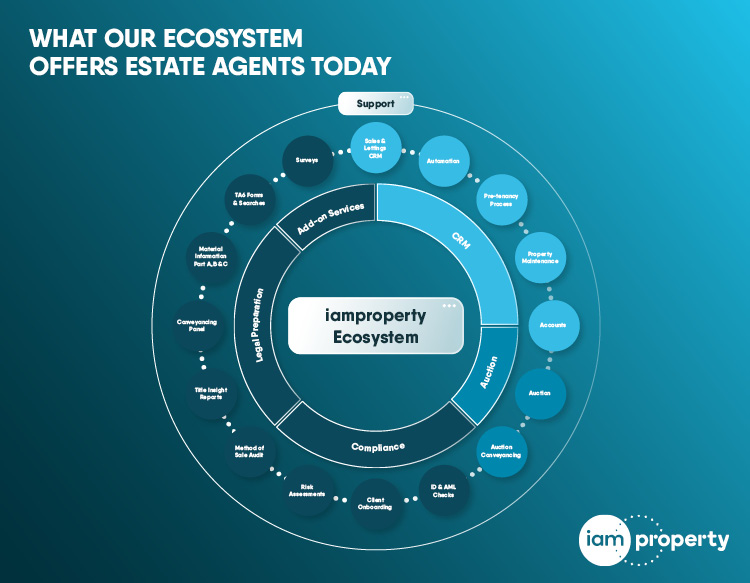
The average British homeowner stays in their property for 20.8 years, according to new research by Zoopla.
The property portal analysed the average turnover of local properties at local authority level across the UK to find out the typical number of years a homeowner occupies a property before moving.
The least frequent movers are those residing in Kensington and Chelsea - one of the most expensive areas in the country - who typically up sticks once every 35.5 years.
Other long-term occupants include those in Brent (35.4 years), Enfield (34.9), Ealing (32.3) and Redbridge (32.2).
The majority of districts where homeowners move least frequently are situated in London, with Oxford (31.2 years) being the only location outside the capital in the top ten.
However, the top ten districts of households moving the most frequently is more varied geographically. In joint top spot comes Dartford in the South East and South Derbyshire in the East Midlands, where the typical homeowner moves every 15 years on average.
These districts are followed by Salford (15.2 years), East Lothian (15.6), Bournemouth, Christchurch and Poole and North West Leicestershire (both 15.7).
"These results contradict a common assumption that UK neighbourhoods are becoming more transient," says Laura Howard, spokesperson for Zoopla.
"They show that, once you’ve managed to buy a property to call home and set down roots in an area, there can be little motivation to move again."
Howard says that while many owners will still be keen to improve their lot, exponentially rising house prices have made it hard for people to move up the ladder frequently.
"For agents the often-lengthy spells between homeowners moving underlines the importance of building a strong and enduring reputation in the community – for example, having excellent knowledge of the local property market and being reliable and transparent," she says.
"A solid local reputation coupled with consistent and relevant communication will put agents at front of mind when homeowners eventually do make that life-changing decision to sell up and move on."
"Forward-looking agents will also ensure they provide current renters – often prospective first-time buyers – with an excellent customer experience, including offering information and guidance, with a view to securing their custom and loyalty further down the line," adds Howard.
Top 10 least frequent movers
|
|
District
|
Region
|
Turnover in years between moves
|
|
1
|
Kensington and Chelsea
|
London
|
35.5
|
|
2
|
Brent
|
London
|
35.4
|
|
3
|
Enfield
|
London
|
34.9
|
|
4
|
Ealing
|
London
|
32.3
|
|
5
|
Redbridge
|
London
|
32.2
|
|
6
|
Haringey
|
London
|
31.5
|
|
7
|
Oxford
|
South East
|
31.2
|
|
8
|
Harrow
|
London
|
30.9
|
|
9
|
Westminster
|
London
|
30.6
|
|
10
|
Camden
|
London
|
29.3
|
Top 10 most frequent movers
|
|
District
|
Region
|
Turnover in years between moves
|
|
1
|
Dartford
|
South East
|
15.0
|
|
1
|
South Derbyshire
|
East Midlands
|
15.0
|
|
2
|
Salford
|
North West
|
15.2
|
|
3
|
East Lothian
|
Scotland
|
15.6
|
|
4
|
Bournemouth, Christchurch and Poole
|
South West
|
15.7
|
|
4
|
North West Leicestershire
|
East Midlands
|
15.7
|
|
5
|
Daventry
|
East Midlands
|
16.0
|
|
5
|
Tewkesbury
|
South West
|
16.0
|
|
6
|
Midlothian
|
Scotland
|
16.3
|
|
7
|
Renfrewshire
|
Scotland
|
16.6
|
Regional frequency of moves
|
|
Region
|
Turnover in years between moves
|
|
1
|
East Midlands
|
17.9
|
|
2
|
Scotland
|
18.7
|
|
3
|
South West
|
19.5
|
|
4
|
West Midlands
|
20.5
|
|
5
|
Yorkshire and the Humber
|
20.6
|
|
6
|
North West
|
20.6
|
|
7
|
East of England
|
21.0
|
|
8
|
North East
|
21.0
|
|
9
|
Wales
|
22.2
|
|
10
|
South East
|
25.4
|
|
11
|
London
|
26.2
|
|
|
Great Britain
|
20.8
|











.png)


.jpg)
.jpg)





%20-%20IMAGE%20Client%20Accounting%20%E2%80%93%20what%20are%20your%20options.jpg)


.png)
.png)
.png)
%20(002).png)






%20(002).jpg)



.png)




Join the conversation
Jump to latest comment and add your reply
Very old news!
And wrong,,,,again.
When i was a kid it was common knowledge that people moved on average every seven years.
I seem also to remember transaction levels of around 3million a year. Halve stamp duty, double transactions equals same revenue for the Govt, plus massive spin offs for local jobs. COME ON BORIS.
SDLT is the issue.
It now makes sense with PD for homeowners to extend and use what would have been spent on pointless SDLT and spend the monies on extending.
The only problem with that is eventually the smaller properties and usually cheaper properties will have disappeared as they will all have been extended.
This makes the original purchase decision even more vital and certainly due consideration should be made for the possible future extension facilities.
So get the location correct and a property that could be extendable and people won't be moving until 40 years!!!
SDLT is a tax on movement.
It should be abolished.
People moving properties generates enormous amounts of beneficial economic activity.
Penal SDLT restricts that as people refuse to pay such ridiculous amounts of SDLT.
I like the Boris idea of NO SDLT up to £500000 properties and then on a gently sliding scale.
With index linking to occur every year so that fiscal drag doesn't bring more properties into the SDLT range.
Will never happen though!
Paul, Boris is the MP for Uxbridge and visited my Uxbridge office of Gibbs Gillespie next door to the Civic Centre. He was charming to all my staff and i remember him saying, " the one thing George got wrong was the stamp duty hikes". This is one subject i know well and took the opportunity to explain the damage that this has caused to the housing market and the economy. I followed it up with a letter explaining all in detail. I do believe if Boris becomes PM, he will act on this. But we will have to wait and see. But £100 bet he will.
Well as you suggest you have a thorough knowledge of the effects of SDLT being as you are directly at the coalface.
It is the opinions of professionals like you that might ultimately produce sane housing policies.
But we have a long way to travel yet.
I suppose the big question is what will replace SDLT receipts?
To remove substantial tax revenue has to be replaced by other tax revenue unless replaced by more borrowing.
I suppose it might be possible that with a lowering of CT more CT will ultimately be received.Laffer Curve and all that!
But this is far from certain.
So in removing SDLT up to a certain point what might replace that lost revenue.
This is a very political point.
But as you are only probably too aware there are many impediments that restrict unnecessarily the easy sale and purchase of property.
Such impediments do not make for a free flowing market.
There is NO economic benefit in having these restrictions.
The economy needs a far more effective property management system.
It is currently dysfunctional which does nobody any favours.
When you think about if desired it can be possible to exchange and complete in 10 days if the willing is there.
Having such a speedy process would revolutionise the way property of all types is utilised.
Unfortunately I believe there are many vested interests that do NOT want a more effective property management process.
Please login to comment